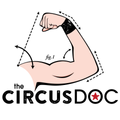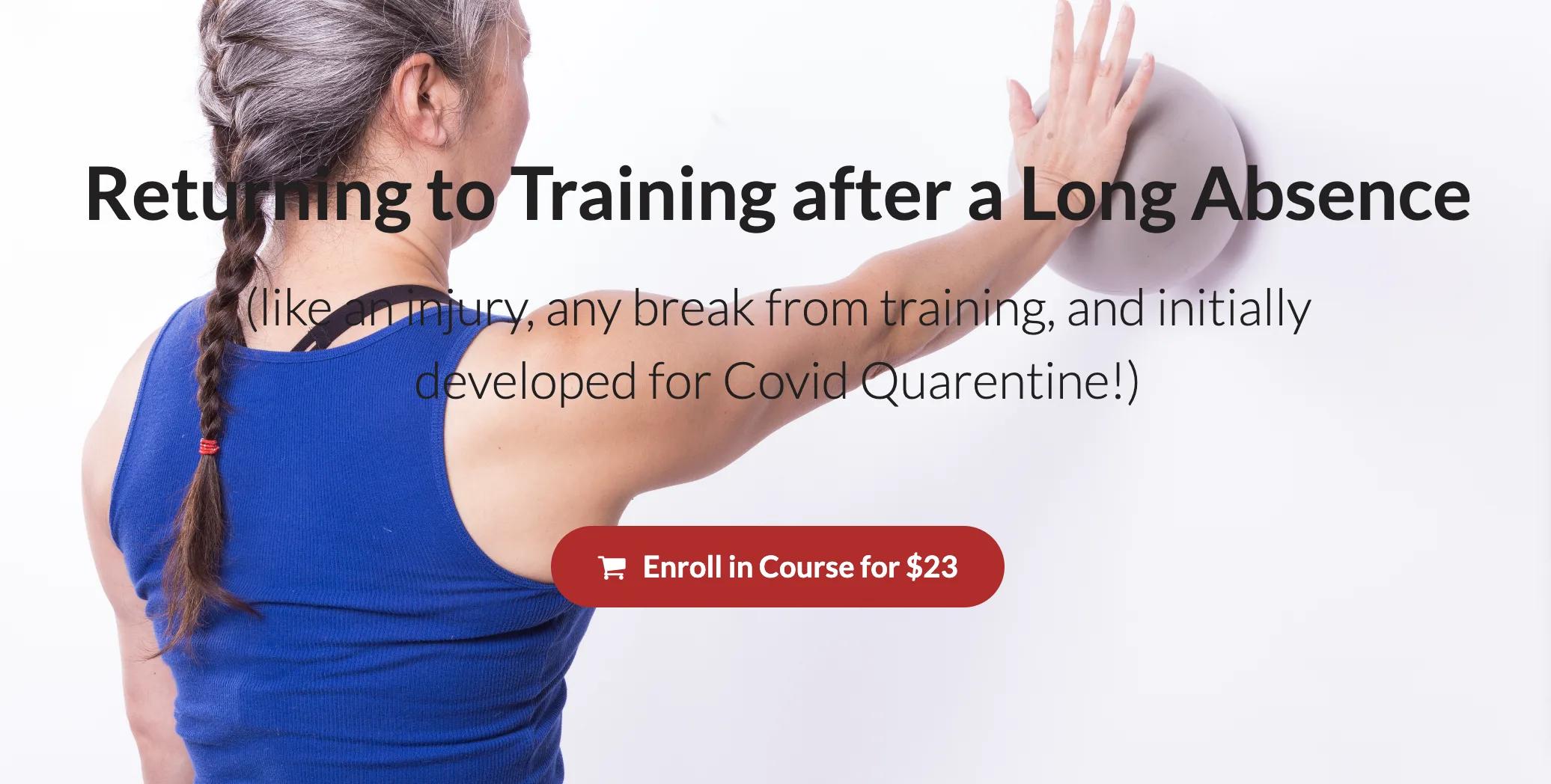Part 1 Considerations
Who was your pandemic circus self?
Many of us found that our love for circus training had to change during the pandemic, and we became different versions of our circus-selves. Are you the aerialist who turned to hand balancing? The wire walker who learned to be a contortionist? The once-a-week-studio-visitor who became the take-every-Zoom-class-around-the-world-at-any-hour-because-you-can? Or the regular devotee or professional who became the holy-moly-I-have-enough-to-handle-and-my training-hasn’t-been-a-priority? Whatever you became, we’ll all face challenges as we return to what we did before.
The most important thing to remember is that we’re all in the same boat. None of us are going back to the same activities, at the same levels, that we did before. Our bodies have ALL been under different stresses for the past few months.
There are the psychological stresses of current events, and the activity-related fear of “losing” everything we’ve learned. Then our bodies are under pressure from changes in nutrition, decreased activity, and all of the other impacts of sheltering in place. Not only have we not been training, we have not been doing our normal baseline activities, like walking farther than down the hall to the kitchen or the bathroom.
You may have tried to keep up with training, but training during quarantine was not equal training with others in the studio. You had space and equipment limitations. You could maybe do handstands and flexibility work, but probably didn’t have the ceiling height for an aerial rig, and maybe not even a pull-up bar. You were probably doing a lot of pushing, but not a lot of pulling. And dynamic shoulder motion? Probably not happening.
If you live in an urban area, you may not have even been allowed to go outside, so there goes cardio. And you almost definitely lost access to your training buddies and the feedback of a hands-on coach who can see you in 3-D, makes you train your “bad” side, or that skill that you hate.
As things begin to re-open across the country and around the world, our options are changing again. How can we return to our previous levels of circus training without putting our bodies at risk?
Avoid overtraining. What is the biggest cause of injury in circus? It’s not falling – though that may cause the most extreme injuries. It is rapid changes in your training time or intensity.
By understanding what physical changes may have happened when you stopped training you can avoid overtraining and stay within what your body can handle.
First the great news! Whatever training you were able to do in whatever amount was a helpful boost to your quarantined body. By staying active in any form, you helped prepare your body for your return to circus and shortened the amount of time it will take you to get back to normal.
Your Movers
As our training declined our muscles still mostly stayed strong. It only takes a small bit of strength training to tell our muscles they are still needed. When we are training consistently our muscles keep a ready supply of the fuel they need to work. When we stay home and stay safe, even if muscles stay strong, they don’t continue to store that fuel and you might not have the energy and endurance you need to keep going through a long training session. That means shorter training sessions when you first go back so you can prime those muscles to expect more movement.
Our actions use more than just muscles, and when you stopped training, your tendons weakened faster than the muscles that pull on them. As a result, your tendons are less prepared for you to jump back in, and might be the vulnerable spot that is likely to hurt, or get injured, at the end of the day.
For example, when the NFL players were locked out in 2011, they didn’t have access to their training facilities for 3 and a half months. (Sound familiar?) When they returned to the field, more players were injured, and more of the injuries were tendon related.
What can this look like in circus? Well, one of the most common tendon injuries in aerialists happens when our grip is stronger than our elbow tendons leading to that niggling pain at your elbow. So even though your grip isn’t going to feel as strong as it used to, ease into what you are asking from yourself (and your tendons). Are your forearms feeling sore after training? Take that as a sign to mix up your apparatus. The demands of being on a vertical apparatus are higher than on a bar, and you can still practice many of your fundamentals.
Your Circus Superpowers
Take stock of the particular body conditioning that developed out of your discipline. Your vestibular system that helps you balance and deal with spinning on a hoop or “washing machines” on an acro partner’s feet hasn’t been getting its workout – unless you have been spinning in your home office chair. Those hand callouses from the trapeze aren’t as tough as they used to be. Your shoulders may not feel as quite as stable and strong over head in a handstand or hanging.
Take into account the time that has passed, and be prepared to work back to where you were. Rome wasn’t built in a day, and neither was your inversion.
Returning to Circus
First and foremost, be prepared for the highs and lows and a continuing level of stress. Your excitement to be back in the studio will likely be measured with the overall weirdness of leaving the house and interacting with other people. Your first training may bring up new fears, or be so exciting that it is hard to hold back. Either way that’s okay.
But circus is strong! We are a community, and be assured that we will support each other through the returns and transitions. We’re good at learning new skills together.
Trust your body, your intuition, and each other.
Ask yourself, what will you bring to this new training?
If your “quarantine hobbies” had you watching videos online, congratulations you were training your brain! And, if you were visualizing yourself do the skills, you helped reinforce the neurological pathways you need to remember how to do them.
Did you find yourself getting outdoors and into cardiovascular activities? Circus artists as a group tend not to have best relationship with cardiovascular fitness. But, if your quarantine activity was (gasp) running, you may notice that you’re in in better cardio shape than before. Enjoy the extra endurance!
If you’ve been taking flexibility and contortion classes online, have you developed the control and strength in that new range of motion to try out in the air?
If you spent your quarantine getting strong, you may discover that you have lots of ability, but your specific skills are rusty. Or, if you have been perfecting your mental training, but you haven’t had time or ability to maintain your strength some things may feel harder than they used to. Either way, this is a good opportunity to focus on the fundamentals.
If you are an aerialist, remember that you’ve probably been training a lot of pushing but not pulling, and though the positions might be similar, not all the strength will translate. So set aside more time to re-build those hanging muscles, even as you enjoy your more open shoulders.
If you are going back to working with a partner, give yourself time to get back in sync and make sure you are both on the same training page.
TAKE YOUR TIME. Keep your trainings short, and take lots of breaks. We are all excited to feel some good muscle soreness, but remember that is your body’s way of saying it is growing and changing. Give yourself ample time to recover with great sleep and good nutrition. If you notice unusual fatigue or pain, don’t try to just push through it, reach out to coaches or circus healthcare professionals.
Come back to the studio and your training gradually and mitigate your risk. Work on technique and fundamentals before you dive into work on gaining a specific skill. It’s okay, and needed, to take a step back. I swear it is ok to work on bent arm inversions. You will get your straight arm back. Be kind to yourself and help others on their journey back to training.
Build resilience in your muscles and tendons. Start with static positions, and add dynamic movements – like beats – over time. This may be a great opportunity to work on the fundamentals on a variety of apparatus to avoid over training one muscle group. For example, straps are a lot more demanding on our stabilizing muscles than trapeze or even silks.
Bottom line? Don’t jump back into training where you left off. It’s okay to modify your routine to fit the realities of these wild and crazy times.
Join me to learn more about returning safely to training LIVE on Wednesday June 24 at 5 pm PDT or watch the replay or check out the course below!
... like an injury or any break from training. initially developed for covid Quarentine!
You may have tried to keep up with training, but life often gets in the way and sometimes we aren’t able to get into the studio. So what happens when you return to having access to your apparatus, your coaches, and your training partners? How can we do it safely?
Bibliography
Frizziero A, Salamanna F, Della Bella E, et al. The Role of Detraining in Tendon Mechanobiology. Front Aging Neurosci. 2016;8:43. Published 2016 Feb 29. doi:10.3389/fnagi.2016.00043
Gabbett TJ. The training-injury prevention paradox: should athletes be training smarter and harder?. Br J Sports Med. 2016;50(5):273-280. doi:10.1136/bjsports-2015-095788
Mujika I, Padilla S. Detraining: loss of training-induced physiological and performance adaptations. Part I: short term insufficient training stimulus. Sports Med. 2000;30(2):79-87. doi:10.2165/00007256-200030020-00002
Mujika I, Padilla S. Detraining: loss of training-induced physiological and performance adaptations. Part II: Long term insufficient training stimulus. Sports Med. 2000;30(3):145-154. doi:10.2165/00007256-200030030-00001
Myer GD, Faigenbaum AD, Cherny CE, Heidt RS Jr, Hewett TE. Did the NFL Lockout expose the Achilles heel of competitive sports?. J Orthop Sports Phys Ther. 2011;41(10):702-705. doi:10.2519/jospt.2011.0107
Narici M, De Vito G, Franchi M, et al. Impact of sedentarism due to the COVID-19 home confinement on neuromuscular, cardiovascular and metabolic health: Physiological and pathophysiological implications and recommendations for physical and nutritional countermeasures [published online ahead of print, 2020 May 12]. Eur J Sport Sci. 2020;1-22. doi:10.1080/17461391.2020.1761076
Paoli, A.; Musumeci, G. Elite Athletes and COVID-19 Lockdown: Future Health Concerns for an Entire Sector. J. Funct. Morphol. Kinesiol. 2020, 5, 30.
Sarto F, Impellizzeri FM, Spörri J, et al. Impact of Potential Physiological Changes due to COVID-19 Home Confinement on Athlete Health Protection in Elite Sports: a Call for Awareness in Sports Programming [published online ahead of print, 2020 May 28]. Sports Med. 2020;1-3. doi:10.1007/s40279-020-01297-6
https://rowingaustralia.com.au/wp-content/uploads/2015/02/AIS-whitepaper-on-load.pdf

